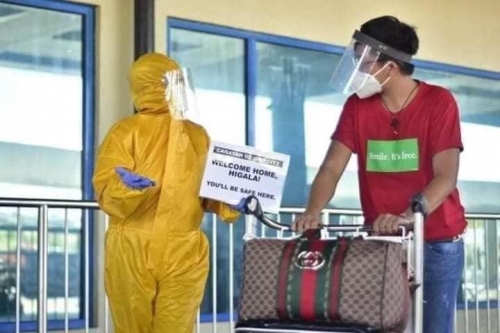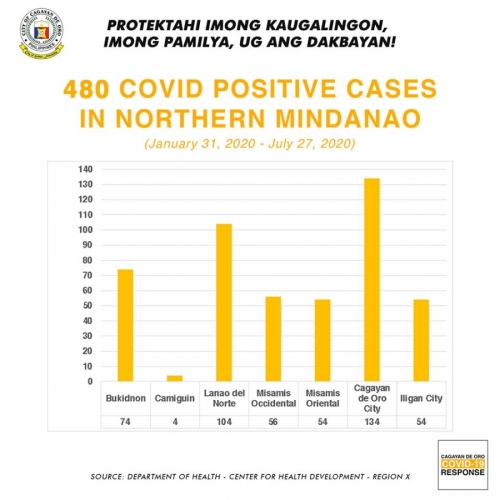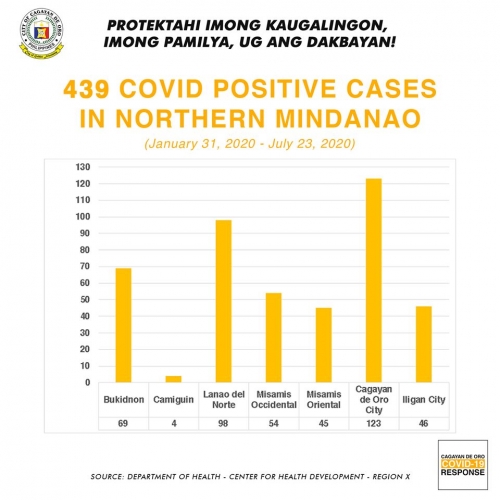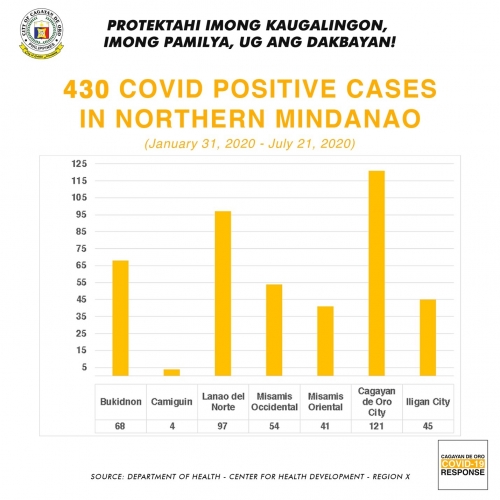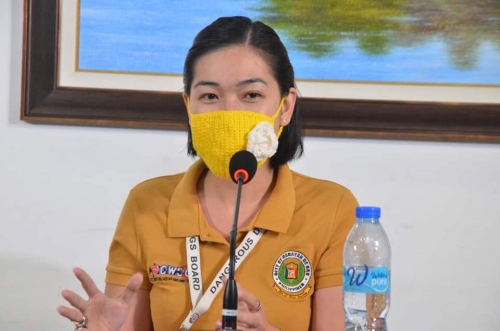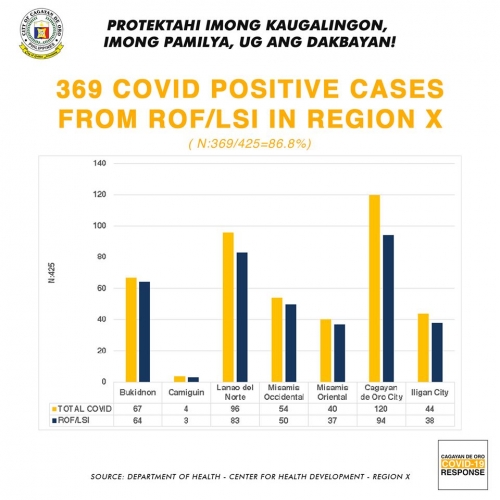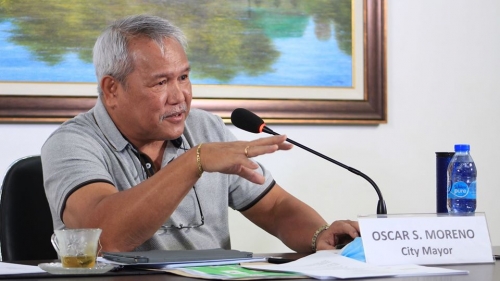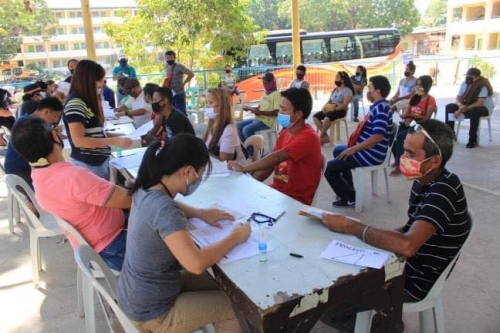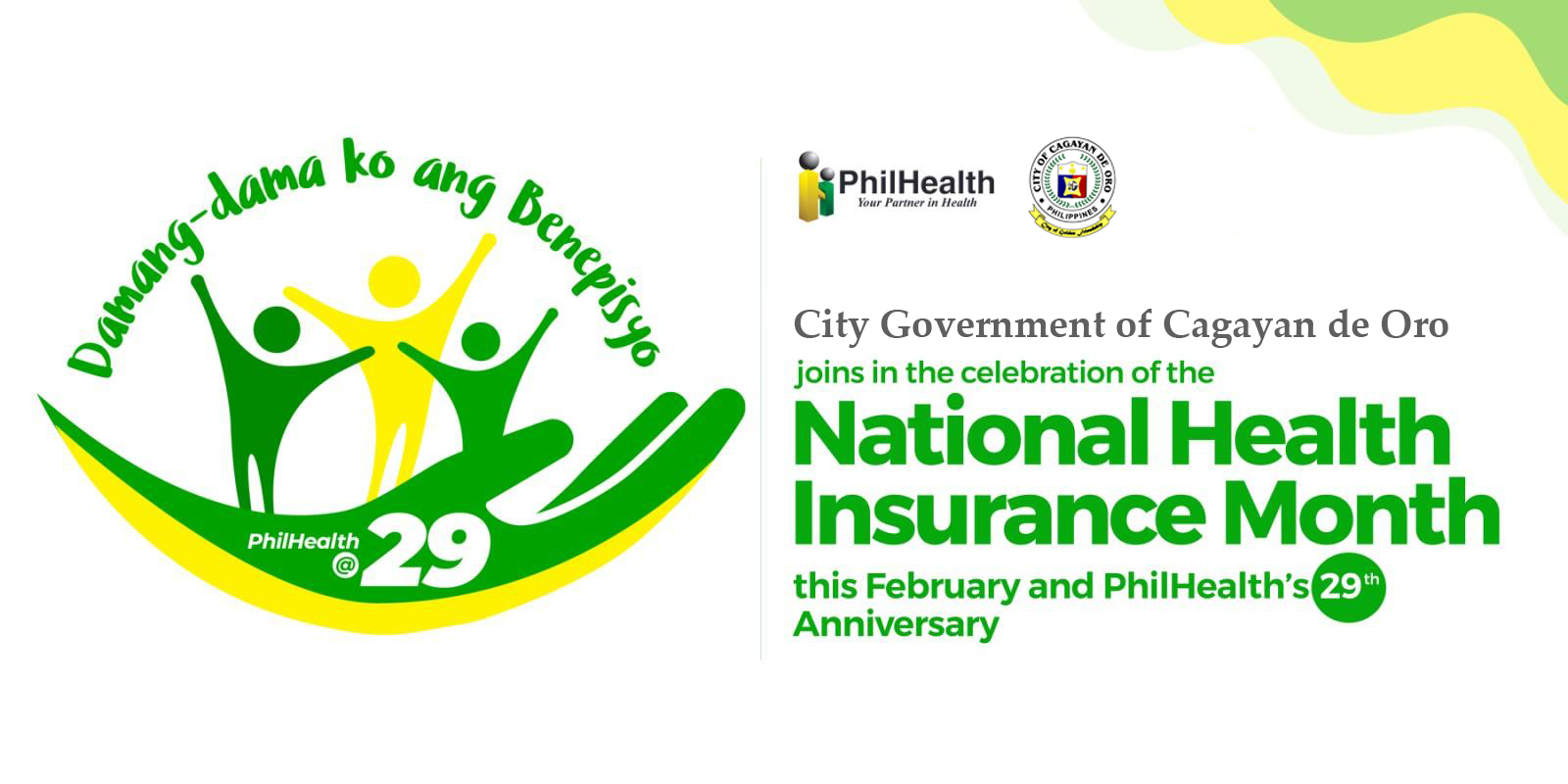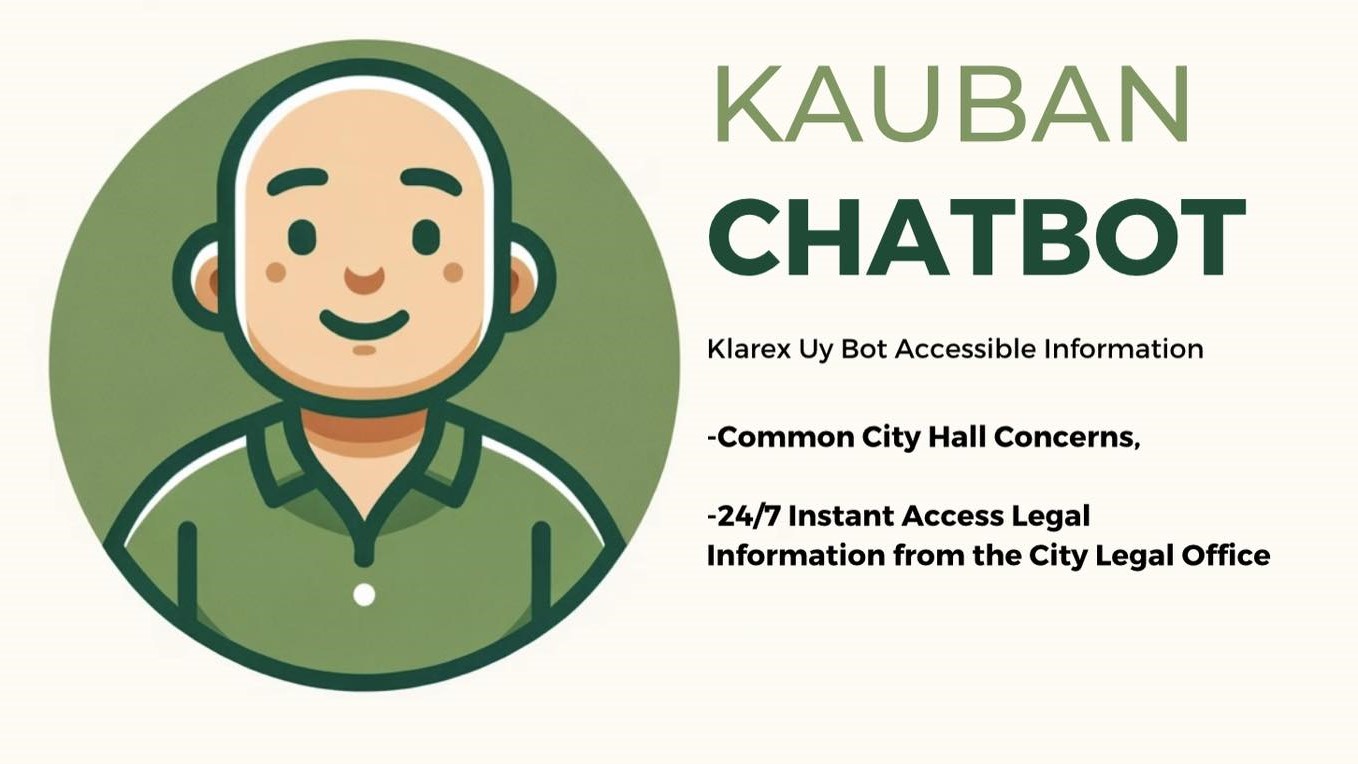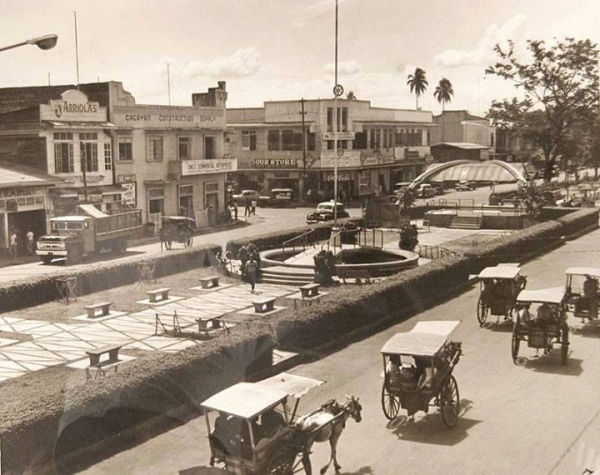Moreno: We cannot turn our backs on Rizal Stadium arrivals
About 19 returning Kagay-anons who were among more than a thousand stranded at the Rizal Memorial Sports Complex in Manila are scheduled to arrive in Cagayan de Oro City within this week, the chief of Cagayan de Oro City Hall´s Operating Tabang LSI/ROFs said Monday noon, July 27.
Paul Douglas “Rocky” Calingin, asst. department head of the City Agricultural Productivity Office and head of Operation Tabang LSI/ROF, confirmed this amid Cagayan de Oro City Mayor Oscar Moreno´s insistence that City Hall will have to level up in their processing and quarantine of LSIs/ROFs.
“You saw the photos of LSIs/ROFs jampacked at Rizal Memorial Sports Complex (in Manila). Imagine how much they suffered waiting for their flight or trip back home and think that they could be someone else´s loved one, friend or neighbor. Or they could be your family, friend or neighbor. So why would you reject them?” Mayor Moreno asked during Monday noon´s press briefing.
It had yet to be confirmed whether the 19 returning Kagay-anons are the last batch of Locally Stranded Individuals (LSIs) and Returning Overseas Filipinos (ROFs) that are scheduled to arrive in the city. But Mayor Moreno said City Hall´s Emergency Operations Center (EOC) and the entire bureaucracy are hard at work ensuring their safe arrival.
“From the day they set foot on the airport, port area or bus terminal, our returning Kagay-anons are fetched, examined and brought straight to the city´s isolation units by our teams at City Hall. They do this every day at any time of the day from dawn to late at night. By caring for our own, we help ease the burden on our government,” Mayor Moreno said.



Moreno: CdeO City Hall prepared for contingencies ahead of quarantine
Setting up an extensive contact tracing network along with isolation units and treatment facilities helped Cagayan de Oro City Hall keep COVID-19 at bay and prepared the city in handling the arrival of returning Kagay-anons, Mayor Oscar Moreno said Tuesday afternoon, July 28.
“As the gateway to and the central hub of northern Mindanao, Cagayan de Oro City’s advantage also became its challenge since it hosts several hospitals including the Northern Mindanao Medical Center (NMMC) which the Department of Health (DOH) designated as the main COVID-19 referral hospital in the region,” Mayor Moreno said during the webinar hosted by the Center for Local and Regional Governance (CLRG).
The webinar titled “Rising To The Challenge of the Pandemic: LGU Best Practices in COVID-19 Crisis Management” featured Mayor Moreno and five local officials who shared their respective experiences and insights in leading their constituencies and local governments on dealing with the COVID-19 pandemic.
In his presentation, Mayor Moreno credited the daily press briefings, the early mobilization of a contact tracing network for intensified household surveillance and City Hall’s forging of a partnership between the DOH, NMMC, and private hospitals for containing and preventing the surge of COVID-19 cases in the city.
“Through our press briefings, we made sure that the public is fully updated and informed of City Hall’s efforts in handling the pandemic and we learned more about COVID-19 from NMMC and DOH,” Mayor Moreno said.
“In return, the city’s JR Borja General Hospital and private hospitals accepted non-COVID-19 cases to allow NMMC to focus on dealing with COVID-19 patients.”
City Hall’s later acquisition of testing facilities to bolster the testing capacities of both NMMC and DOH helped the city’s efforts on early detection, screening and isolation of both city residents and returning Kagay-anons who test positive for COVID-19, Mayor Moreno shared.
“We mobilized the entire City Hall bureaucracy and continually strategized our efforts in handling our COVID-19 positive patients and our returning Kagay-anons. Through partnerships with stakeholders like hotels, inns and pension houses, hospitals and the private sector, we at City Hall continue to have a good handle on our situation,” Mayor Moreno said.



Positive COVID-19 cases in Region 10 climb to 480
The number of positive cases of COVID-19 in Northern Mindanao has already reached 480, as of July 27.
Out of the total positive cases, 415 came from Locally Stranded Individuals (LSIs) or Returning Overseas Filipinos (ROFs).
Positive cases in Cagayan de Oro City alone reached 135 (actual count), wherein 104 came from LSIs/ROFs.
Figures from CDO also indicated 68 out-patients, 61 recoveries, and 6 deaths.
Records from the Feasibility Analysis of Syndromic Surveillance using Spatio-Temporal Epidemiological Modeler (FASSSTER Philippines) have indicated that the case doubling time for CDO is at 14.41% with 15.38% Critical Care Utilization Rate (CCUR) for the period of July 10-18, 2020.
FASSSTER Philippines is an evidence-based forecast of possible cases and scenarios on the spread of COVID-19 in the country.
The Inter-Agency Task Force (IATF) has placed the entire Region 10 under the Modified General Community Quarantine (MGCQ) status until July 31, 2020.
The MGCQ status is the transition phase between GCQ and New Normal when the following temporary measures are relaxed and become less necessary: (1) limiting movement and transportation, (2) the regulation of operating industries, and (3) the presence of uniformed personnel to enforce community quarantine protocols.
#NagkahiusaBatokCOVID19 #CDOCOVID19Response #iCanDOit #HealAsOne #COVIDI19PH



COVID-19 cases in Region 10 reach 439
The number of positive cases of COVID-19 in Northern Mindanao has already reached 439, as of July 23.
Out of the total positive cases, 381 came from Locally Stranded Individuals (LSIs) or Returning Overseas Filipinos (ROFs).
Positive cases in Cagayan de Oro City alone reached 123 (actual count), wherein 96 came from LSIs/ROFs.
Figures from CDO also indicated 58 out-patients, 58 recoveries, 6 deaths, and 1 currently admitted at the Northern Mindanao Medical Center (NMMC), the region's COVID-19 referral hub.
Records from the Feasibility Analysis of Syndromic Surveillance using Spatio-Temporal Epidemiological Modeler (FASSSTER Philippines) have indicated that the case doubling time for CDO is at 14.41% with 15.38% Critical Care Utilization Rate (CCUR) for the period of July 10-18, 2020.
FASSSTER Philippines is an evidence-based forecast of possible cases and scenarios on the spread of COVID-19 in the country.
The Inter-Agency Task Force (IATF) has placed the entire Region 10 under the Modified General Community Quarantine (MGCQ) status until July 31, 2020.
The MGCQ status is the transition phase between GCQ and New Normal when the following temporary measures are relaxed and become less necessary: (1) limiting movement and transportation, (2) the regulation of operating industries, and (3) the presence of uniformed personnel to enforce community quarantine protocols.
#NagkahiusaBatokCOVID19 #CDOCOVID19Response #iCanDOit #HealAsOne #COVIDI19PH



COVID-19 cases in Northern Mindanao at 430
The number of positive cases of COVID-19 in Northern Mindanao has already reached 430, as of July 21.
Out of the total positive cases, 373 came from Locally Stranded Individuals (LSIs) or Returning Overseas Filipinos (ROFs).
Positive cases in Cagayan de Oro City alone reached 121 (actual count), wherein 95 came from LSIs/ROFs.
Figures from CDO also indicated 63 out-patients, 51 recoveries, 6 deaths, and 1 currently admitted at the Northern Mindanao Medical Center (NMMC), the region's COVID-19 referral hub.
Records from the Feasibility Analysis of Syndromic Surveillance using Spatio-Temporal Epidemiological Modeler (FASSSTER Philippines) have indicated that the case doubling time for CDO is at 14.41% with 15.38% Critical Care Utilization Rate (CCUR) for the period of July 10-18, 2020.
FASSSTER Philippines is an evidence-based forecast of possible cases and scenarios on the spread of COVID-19 in the country.
The Inter-Agency Task Force (IATF) has placed the entire Region 10 under the Modified General Community Quarantine (MGCQ) status until July 31, 2020.
The MGCQ status is the transition phase between GCQ and New Normal when the following temporary measures are relaxed and become less necessary: (1) limiting movement and transportation, (2) the regulation of operating industries, and (3) the presence of uniformed personnel to enforce community quarantine protocols.
#NagkahiusaBatokCOVID19 #CDOCOVID19Response #iCanDOit #HealAsOne #COVIDI19PH

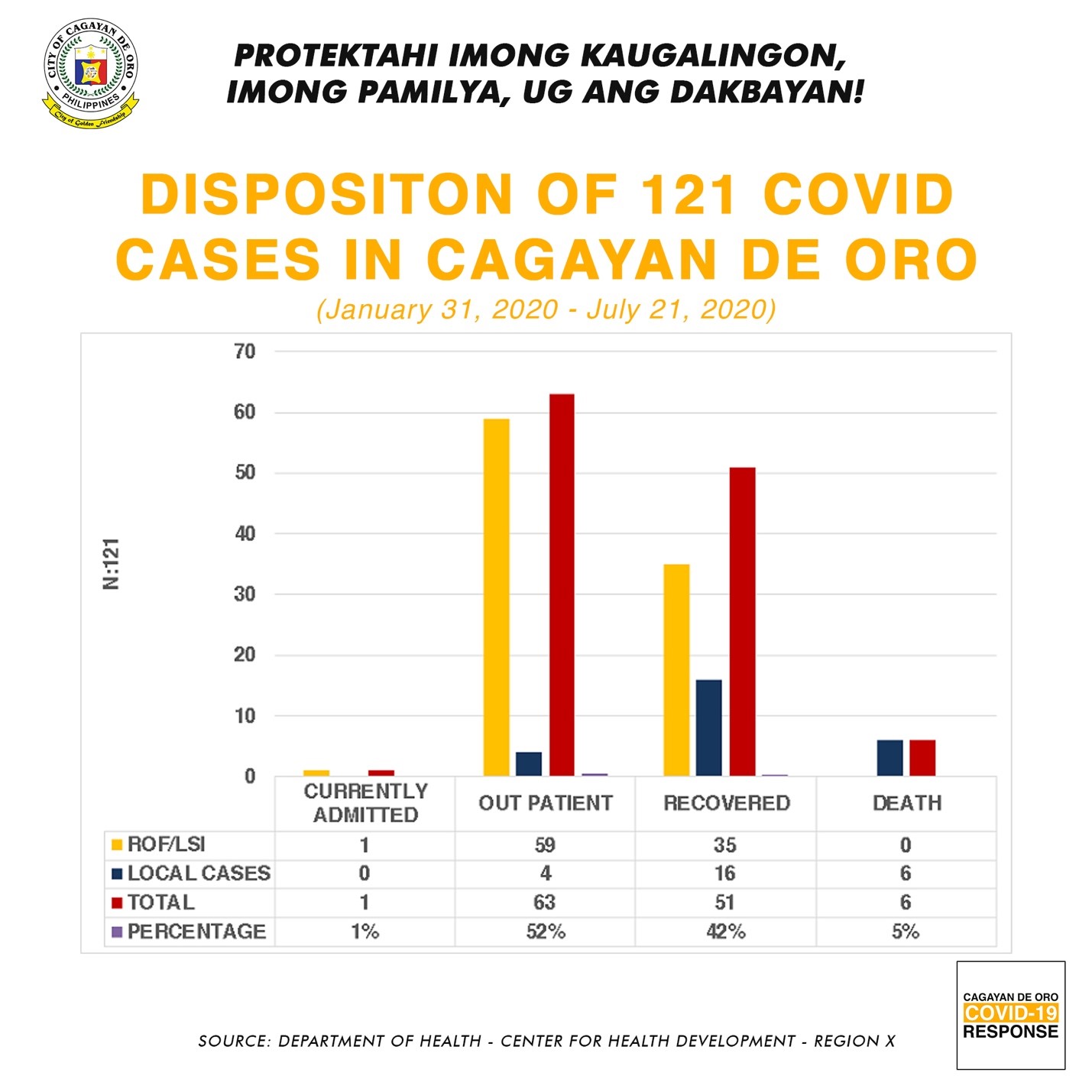

‘City Hall-supervised quarantine is for comfort, protection, not vacation
The accommodations provided free of charge to every Kagay-anon arrival may not be first-class, but they are decent and comfortable enough for the duration of their two-week quarantine, City Hall officials said Tuesday morning (July 21).
“Their rooms are airconditioned, with beds, tables, cable TV and WiFi and these are disinfected prior to their transfer,” said Oliver Egypto, chief of the Office of Community Affairs.
“While we prioritize their comfort, their two-week quarantine is not a vacation but is for their protection and the city.”
Officers of Cagayan de Oro City Hall’s Operation Tabang LSI/ROF (Locally Stranded Individuals/Returning Overseas Filipinos) explained during Tuesday morning’s press briefing their preparations for Kagay-anon arrivals confined in the city´s designated isolation units.
CIU manager Rhyselle Melliza Descallar said Kagay-anon arrivals are given a checklist on the conditions they should comply with during their two-week quarantine at the city´s isolation units that consist mostly of rooms in hotels, inns and pension houses.
Descallar said: “They are expected to observe minimum public health standards like wearing face masks or shields even inside their rooms and to wash their hands. No smoking or drinking liquor and list down all essential items needed like maintenance medicines for one-time delivery to their rooms by staff.”
Food is delivered to their rooms on schedule and medical staff including doctors are on call 24/7 to address whatever conditions they may experience during their confinement.
“We encourage them to report to us any symptom they may experience like flu, fever, dry coughing, and difficulty in breathing,” Descallar said.
Egypto advised Kagay-anon arrivals to call them in advance for their arrival schedule so they can make preparations.
´The city is welcoming our arrivals but we ask for their patience and cooperation (during their quarantine),” he said. “We are in a global crisis, yet we strive to ensure their safety and comfort.”




Positive COVID-19 cases in Region 10 reach 425
As of July 20, the number of positive cases of COVID-19 in Northern Mindanao has already reached 425.
Out of the total positive cases, 369 came from Locally Stranded Individuals (LSIs) or Returning Overseas Filipinos (ROFs).
Positive cases in Cagayan de Oro City alone reached 120 (actual count), wherein 84 came from LSIs/ROFs.
Figures from CDO also indicated 62 out-patients, 51 recoveries, 6 deaths, and 1 currently admitted at the Northern Mindanao Medical Center (NMMC), the region's COVID-19 referral hub.
Only 4 out the 62 out-patients from CDO are listed as local transmission and the rest are from ROFs/LSIs.
Records from the Feasibility Analysis of Syndromic Surveillance using Spatio-Temporal Epidemiological Modeler (FASSSTER Philippines) have indicated that the case doubling time for CDO is at 14.41% with 15.38% Critical Care Utilization Rate (CCUR) for the period of July 10-18, 2020.
FASSSTER Philippines is an evidence-based forecast of possible cases and scenarios on the spread of COVID-19 in the country.
The Inter-Agency Task Force (IATF) has placed the entire Region 10 under the Modified General Community Quarantine (MGCQ) status until July 31, 2020.
The MGCQ status is the transition phase between GCQ and New Normal when the following temporary measures are relaxed and become less necessary: (1) limiting movement and transportation, (2) the regulation of operating industries, and (3) the presence of uniformed personnel to enforce community quarantine protocols.
See graphs for more details.



Guidelines on online selling, house delivery of meat released
The National Meat Inspection Service (NMIS) has recently released the guidelines on online selling and house delivery of meat following the deluge of meat businesses on social media.
Local online sellers of meat are encouraged to register with the Department of Trade and Industry (DTI) and secure a business permit from the local government unit of Cagayan de Oro City.
Meat sellers are also urged to study our food law requirements, such as the RA 9296 as amended (Meat Inspection Code of the Philippines), RA 10536 (An Act Amending RA 9296), and RA 10611 (Food Safety Act of 2013).
Meat being sold must come either of these sources: (1) Locally-sourced meat from NMIS-licensed Meat Establishments (ME) and (2) Imported meat from the Department of Agriculture (DA)-accredited Cold Storages Warehouses.
Meat from NMIS-licensed ME may be traded outside the locality, while meat from LGU-licensed ME may only be traded inside the locality.
Online sellers of must now secure a Meat Inspection Certificate as those without proper certification will be subject to NMIS enforcement activities.
The transport and handling of meat must also follow the government standards.






Oro scores 11.43% critical care utilization rate
An ecstatic Mayor Oscar Moreno reported on July 18 that Cagayan de Oro City sits on a “very comfortable level” as the city scored 11.43% critical care utilization rate (CCUR) and 14.48% case doubling time based on Feasibility Analysis of Syndromic Surveillance using Spatio-Temporal Epidemiological Modeler or FASSSTER Philippines for the period July 8-16, 2020.
The threshold of CCUR is at 30% while the critical level of case doubling time is at 7%.
The lower CCUR and the higher case doubling time means better for the city in handling Covid-19 pandemic.
FASSSTER Philippines is an evidence-based, web-based forecasts of possible cases and scenarios on the spread of COVID-19 in the country.
Second wave SAP cash aid sked in CdeO eyed on last week of July
About 20,099 out of more than 33,000 indigent families in Cagayan de Oro City were initially identified as beneficiaries of the second wave of the government´s Social Amelioration Program (SAP) cash aid scheduled at the end of July.
“The beneficiaries will be those who filled up the COVID-19 Intake Card (CIC) forms after they were unable to receive the SAP cash aid during the first wave of distribution,” City Social Welfare and Development Office (CSWDO) information officer Charmaine Tadlas said during Saturday morning´s (July 18) press briefing.
“The list will still be validated prior to the scheduled distribution,” she added.
Tadlas said they submitted the list of beneficiary families who filled out the CIC form numbering more than 33,000 to the Department of Social Welfare and Development Office regional office (DSWD-10) for validation and they resent the list back to their office, reducing the number to 20,099.
She said: “Of course this will still be re-validated with the barangay officials to avoid duplication. Those who were cut out of the submitted list had either received the first wave of SAP cash aid or had received cash aid from other sources like the 4Ps (Pantawid Pamilyang Pilipino Program) or the COVID-19 Adjustments Measure Program (CAMP).”
Unlike the first SAP cash aid payout that was distributed at barangay halls, CSWD team leader Edgar Requilme said the P6,000 SAP cash aid will be remitted to the family beneficiaries through authorized money remittance and payment centers like M. Lhullier, Cebuana Lhullier, and USCC-Western Union.
“The confirmed beneficiaries will be notified through text on the schedule of SAP cash aid payout and where they will collect their cash aid,” Requilme said. “Another meeting will be held to finalize the payout schedule which we hope will be held on the last week of July.”
Tadlas also said beneficiaries in far-flung mountain barangays will receive their SAP cash aid at the barangay halls also on the last week of July.
“For now we identified 38 families each in Barangays Tagpangi and Pagalungan as SAP cash aid beneficiaries,” Tadlas said.



 World Health Organization
World Health Organization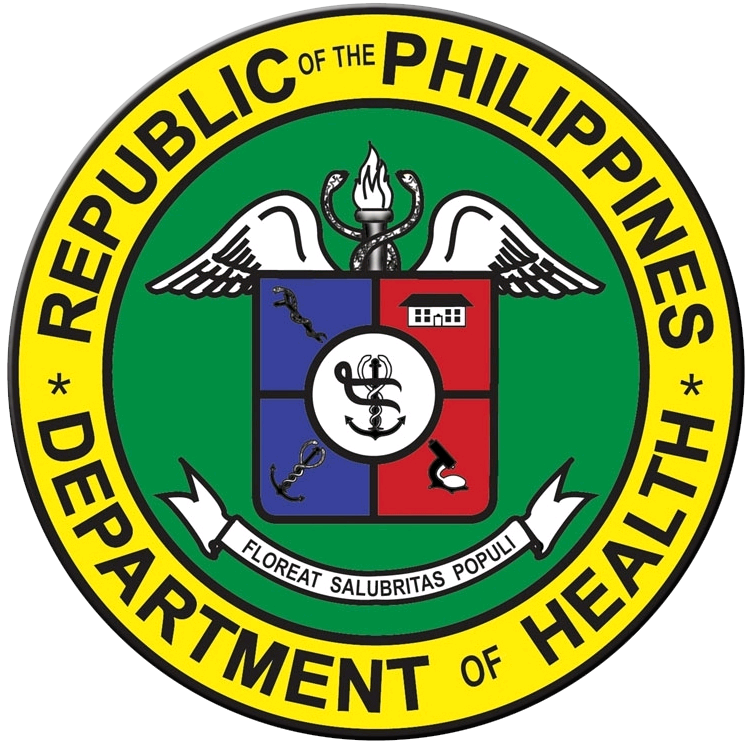 Department of Health
Department of Health 


